UNESCO World Heritage Sites in India
UNESCO World Heritage Sites in India
Table of Contents
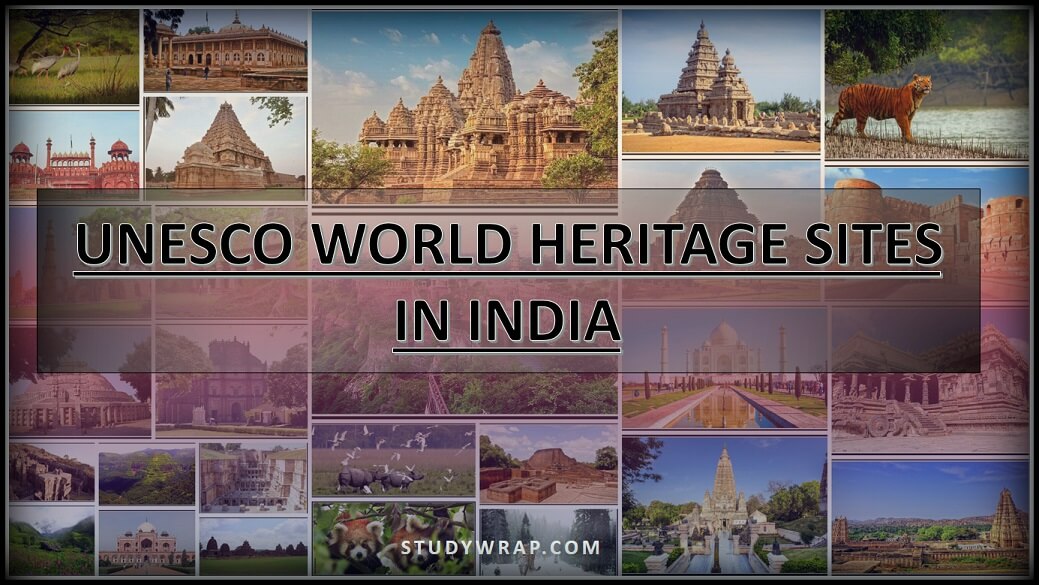
What is World Heritage Sites?
· A World Heritage Site is a place that is listed by UNESCO for its special cultural, physical, historical, scientific or other form of significance, which is legally protected by international treaties. The list of World Heritage Sites is maintained by the international ‘World Heritage Programme’, administered by the UNESCO World Heritage Committee.
· The United Nations Educational, Scientific and Cultural Organization (UNESCO) seeks to encourage the identification, protection and preservation of cultural and natural heritage around the world considered to be of outstanding value to humanity.
· This is embodied in an international treaty called the Convention concerning the Protection of the World Cultural and Natural Heritage, adopted by UNESCO in 1972.
· India has the sixth largest number of sites in the world. India has 38 world heritage sites that include 30 Cultural Sites, 7 Natural Sites and 1 mixed site.
UNESCO world heritage Sites in India
If you want to read a short List form of this Post than – Click Here.
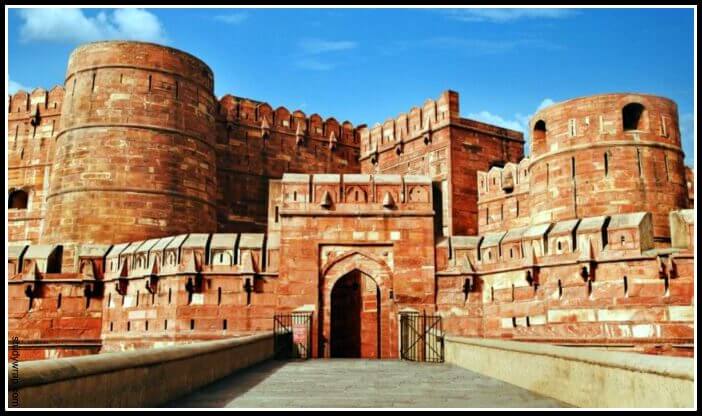
Agra Fort (1983)
· City – Agra
· State – Uttar Pradesh
· Also referred to as the Red Fort, a 16th-century monument, this site represents Mughal magnificence and power as the centre piece of their empire.
· It serves as the reminder of that opulent power that the empire held throughout its reign.
· The fortress is located on the right bank of the Yamuna River, Built from red sandstone and surrounded by towers, moats, palaces, and mosques.
· The noted structure built within the precincts of the fort includes –
o Khas Mahal
o Diwan-i-Khas
o Diwan-i-Aam
o Pearl Mosque
o Nagina Masjid
· These monuments are remarkable for the fusion of Persian art of the Timurid and Indian art forms. Listed as one of the World Heritage Sites in India in 1983, this site is culturally very significant.
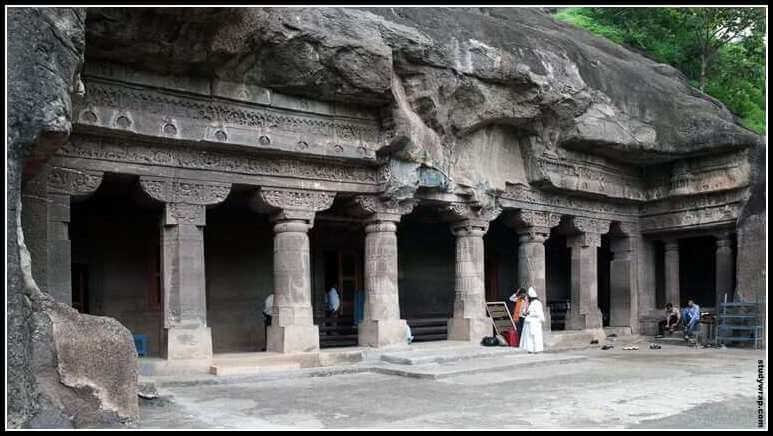
Ajanta Caves (1983)
· City – Aurangabad district
· State – Maharashtra
· These are Buddhist cave system that was initially built in the 2nd century BC in reign of Emperor Ashoka.
· Many more richly decorated caves were added to these caves during the Gupta period (5th and 6th centuries A.D).
· These caves showcase richly decorated paintings and frescoes.
· The paintings and sculptures of Ajanta, considered masterpieces of Buddhist religious art, have had a considerable artistic influence.
· There are 31 rock-cut cave monuments which are unique representations of the religious art of Budhhism.
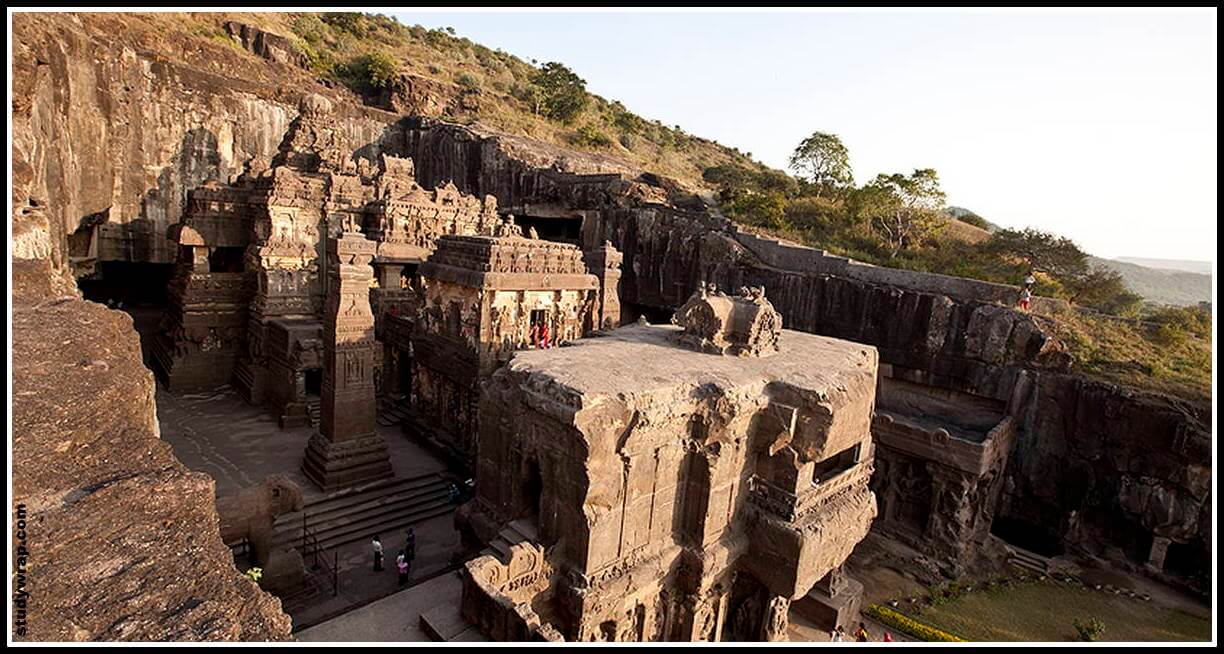
Ellora Caves (1983)
· City – Aurangabad
· State – Maharashtra
· These caves are blend of religious arts from Jainism, Buddhism and Hinduism practices built around 600 to 1000 AD.
· Declared as a World Heritage Site by UNESCO in 1983, it is home to 34 monasteries and temples are sculpted closely into rock walls of a basalt cliff.
· They are notable for reflection of artistic creation of the ancient civilization of India.

Taj Mahal (1983)
· City – Agra
· State – Uttar Pradesh
· The Taj Mahal, one of the Seven Wonders of the World, is a mausoleum — a funerary mosque.
· Built by Emperor Shah Jahan in memory of his third wife Begum Mumtaz Mahal who had died in 1631.
· It is a large structure made in white marble in distinctive Mughal architectural Style, a combination of elements from Indian, Islamic, and Persian styles.
· It has an octagonal layout marked by four minarets at four corners with a pristine elevation of a central spherical dome. Its floral arabesques and decorative calligraphy enhance the overall beauty of the monument.
· It took 16 years between 1631 and 1648 to build the Taj Mahal and is, therefore, one of the UNESCO World Heritage Sites in India in 1983, under Category i, as a cultural property/monument.
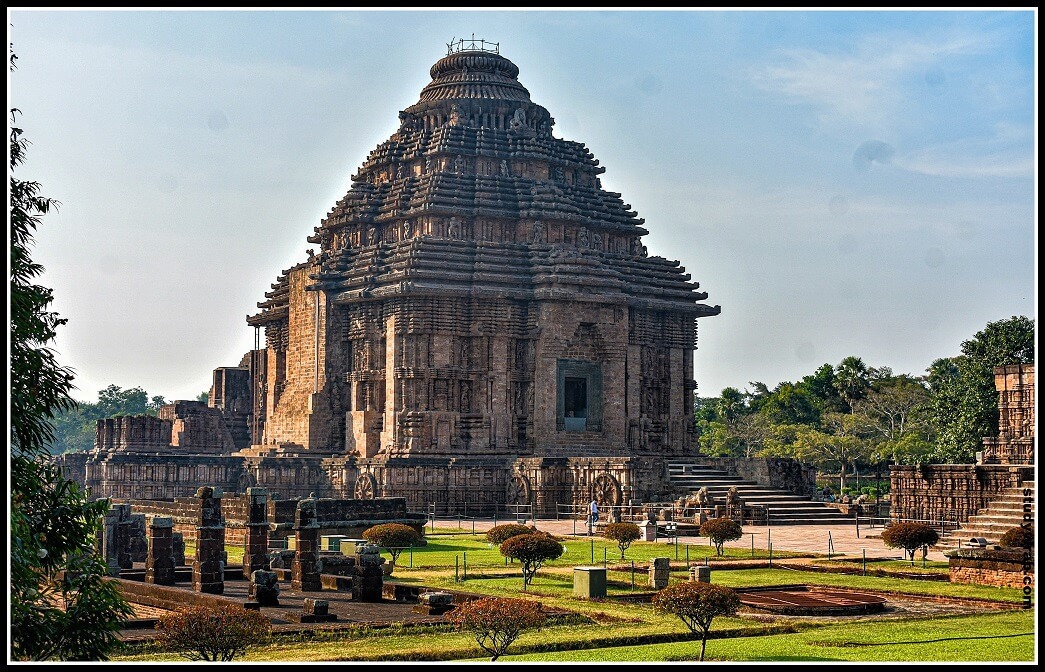
Sun Temple, Konarak (1984)
· City – Konark
· State – Odisha
· The Konark Sun Temple is a 13th century Sun Temple (also known as the “Black Pagoda”), at Konark, in Odisha Located on the east coast of the Bay of Bengal in the Mahanadi Delta.
· The temple is attributed to King Narashima Deva I of the Eastern Ganga Dynasty.
· It is built like a gigantic chariot of Surya with details including walls, pillars, and carved 24 stone wheels and led by a team of six horses.
· The majority of the temple is now in ruins. Also included in the list of the Seven Wonders of India, this temple is also called the Surya Devalaya.
· It is one of the most renowned temples of India and inscribed as World Heritage Site in 1984 as a cultural property.
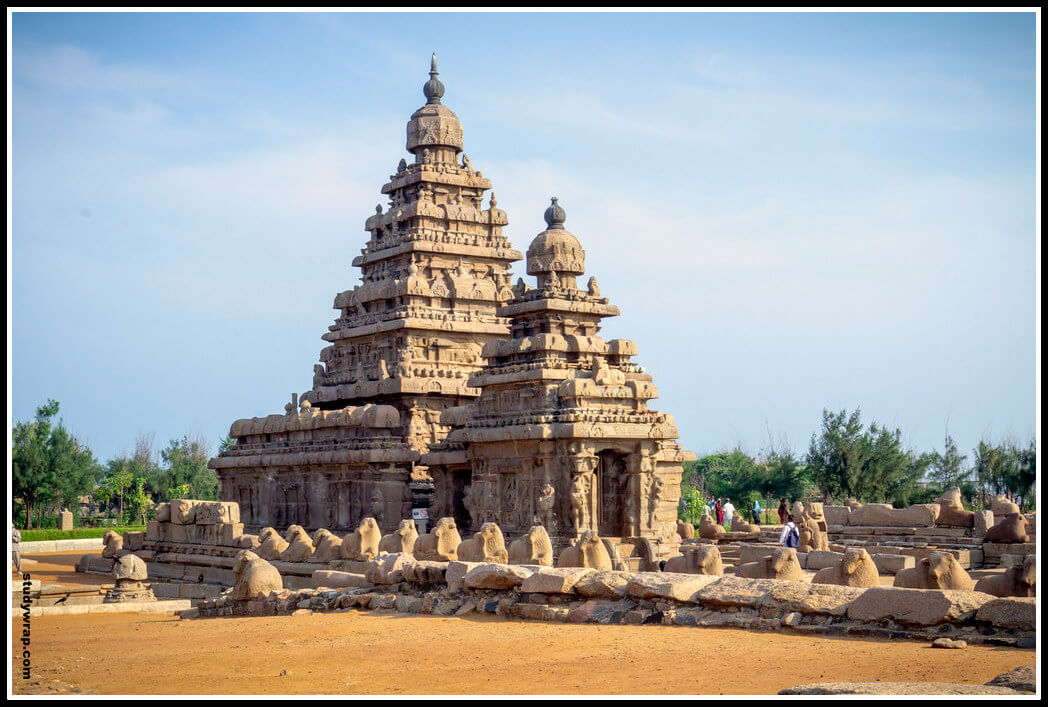
Group of Monuments at Mahabalipuram (1984)
· City – Mahabalipuram
· State – Tamil Nadu
· Built by the Pallava kings during the 7th and 8th centuries, this collection of monuments is carved entirely from a rock.
· The most distinctive features of the complex are the temples shaped like chariots, together with the cave sanctuaries and open-air reliefs.
· The monuments inscribed are –
o the Ratha Temples: Temples in the form of chariots, Mandapas,
o 11 Cave sanctuaries covered with bas-reliefs,
o Rock relief of Descent of the Ganges, which is the largest open air Rock relief also known as Arjun’s Penance or Bhagiratha’s Penance.
· It was inscribed under the UNESCO World Heritage list in 1984 as a cultural heritage.

Kaziranga Wildlife Sanctuary (1985)
· City – Golaghat, Karbi Anglong, and Nagaon districts
· State – Assam
· The Kaziranga Wildlife Sanctuary is located in Assam, India and one of the most important tourist attractions. It was awarded as World Heritage Sites of India by UNESCO in 1985.
· This park is popular for its unique and natural environment. This park lies on the flood plains of the river Brahmaputra and consists mainly of dense grasslands, forests.
· Named as a reserved forest in 1908, it aimed at preserving the dwindling population of the rhinoceros species that inhabit the area.
· It was recognized as a national park in 1974, it comprises largest population of the Indian one-horned rhinoceros.
· Other important species includes – Elephants, Wild Buffalos, Swamp deers, Tigers and many different species of Birds.
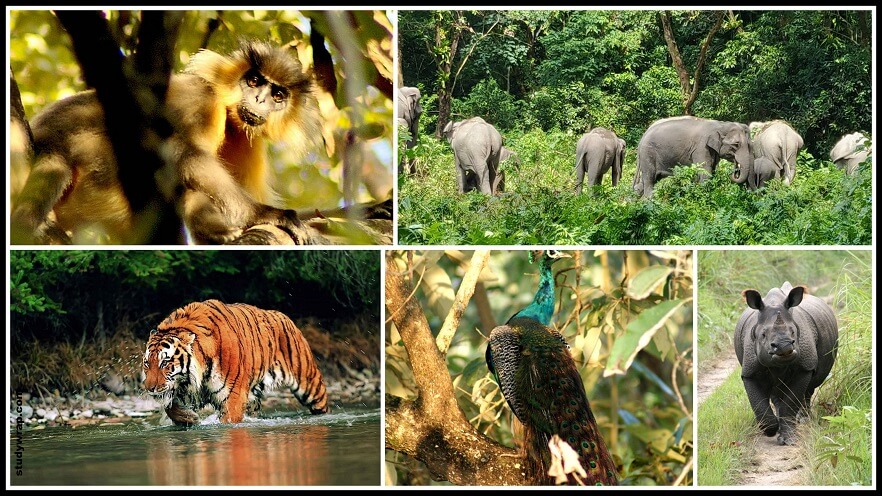
Manas Wildlife Sanctuary (1985)
· City – Baksa
· State – Assam
· Located within the plains of Manas River and the foot of the Himalayas.
· Located in the Himalayan foothills, it is contiguous with the Royal Manas National Park in Bhutan.
· This sanctuary serves as home to various plant species and threatened species including 21 most-threatened species of mammals, 36 reptile species, 3 amphibians and 350 species of birds.
· Elevated into a sanctuary until it was included in the “Project Tiger” in 1973, the sanctuary was developed into a tiger reserve.
· Since 1992, the sanctuary was listed under “The World Heritage in Danger” but removed in 2011 after significant conservation efforts.
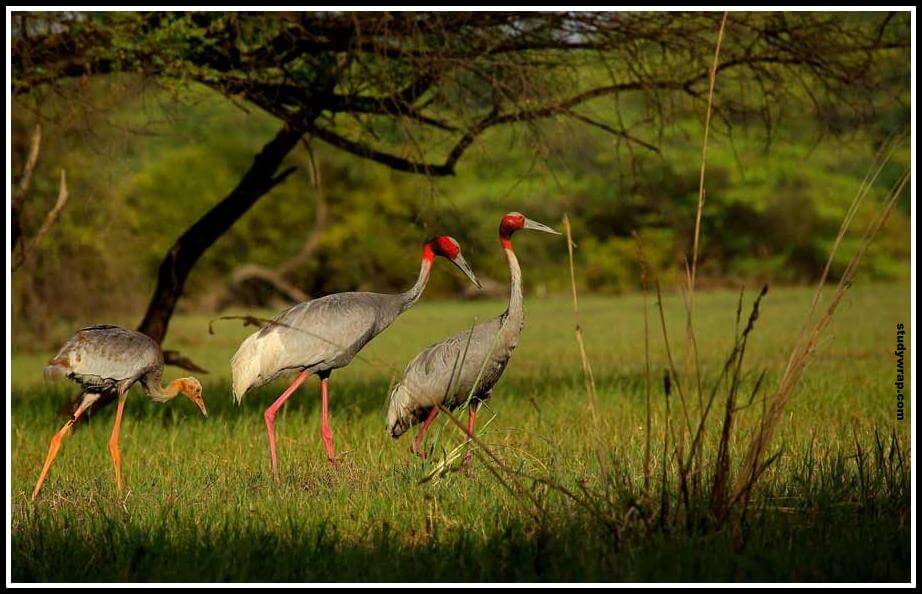
Keoladeo National Park (1985)
· City – Bharatpur
· State – Rajasthan
· Also known as Keoladeo Ghana National Park, this bird sanctuary is a famous attraction in India. It was declared a national park in 1982.
· It is one of few natural sites listed under UNESCO World Heritage Sites in India that was inscribed in 1985.
· It is famous for 364 species of wintering birds that flock in large numbers, arriving from distant countries of Afghanistan, Turkmenistan, China and Siberia.
· Besides birds, there are 379 floral species, 50 species of fish, 13 species of snake, seven species of lizard, seven species of amphibians, seven turtle species and variety of other invertebrates.
· It was recorded as a Ramsar Wetland site in 1981. It was inscribed in the UNESCO World Heritage List in 1985.
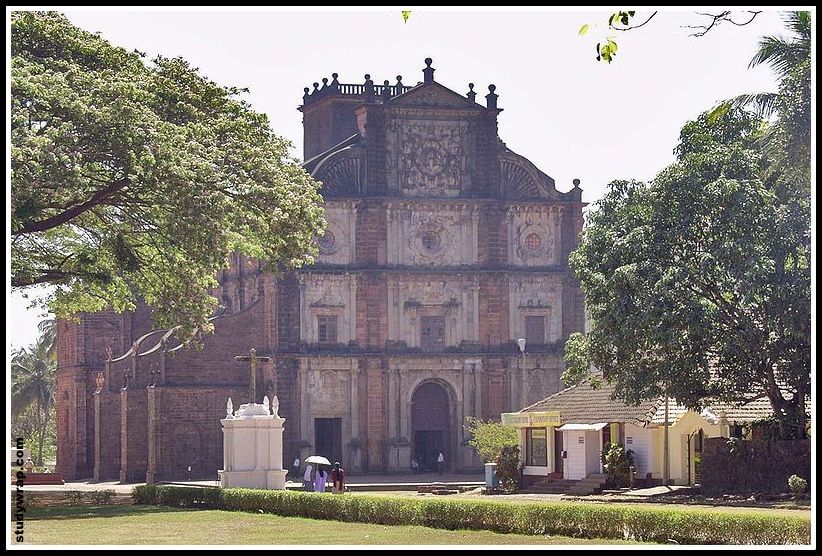
Churches and Convents (1986)
· State – Goa
· Declared as a World Heritage Site in 1986, churches and convents of Old Goa is the name given by UNESCO to a set of religious monuments located in Velha Goa (or Old Goa), Goa, India.
· There were originally 60 churches of which some of the surviving monuments in the city of Velha Goa.
· Dubbed as the “Rome of the Orient”, the main building included are –
o St. Catherine’s Chapel
o Church and Convent of Francis of Assisi
o Sé Cathedral de Santa Catarina
o Basilica of Bom Jesus
o Church of Saint Cajetan including the seminary
o Church of Our Lady of the Rosary
o St. Augustine Tower
· Built by the Portuguese colonial rulers during the 16th and 18th centuries in Goa. The most significant of these monument is Basilica of Bom Jesus which also houses the tomb with the relics of St. Francis Xavier.
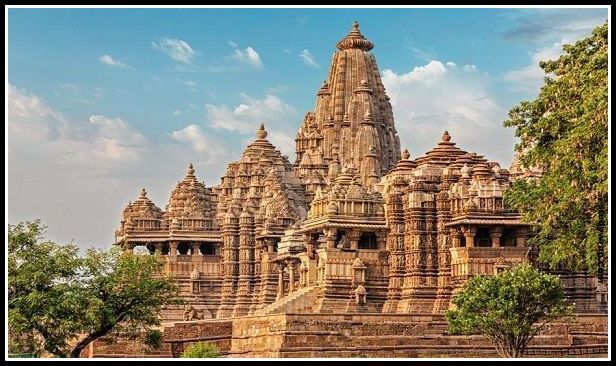
Khajuraho Group of Monuments (1986)
· City – Chhatarpur district
· State – Madhya Pradesh
· Attributed to the monuments of the Chandela dynasty in India, it is famous for its Nagar-style architectural symbolism and its erotic sculptures.
· Masterfully combining the architecture and sculpture in its art form, it has a total of 85 temples built within this complex but only 22 survived.
· The Kandariya temple is the most prominent of all of these temples in the Khajuraho complex.
· All of these temples have been around since the 10th century. Inscribed by UNESCO in 1986, it is an artist proof of the Chandela Culture in India.
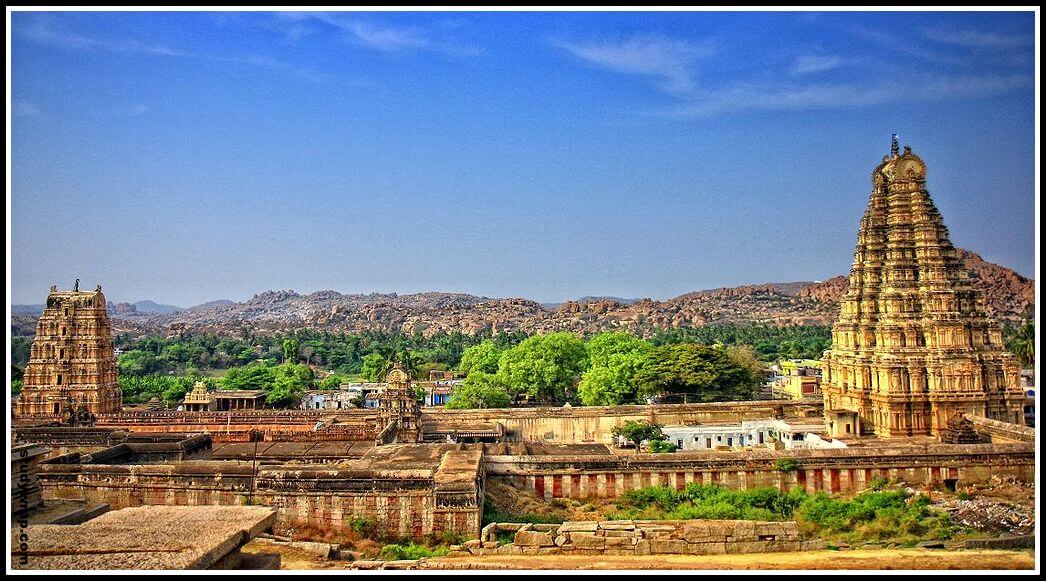
Group of Monuments at Hampi (1986)
· City – Hampi, Ballari district
· State – Karnataka
· This group of monuments dominates a sombre but ostentatious town of Hampi situated on the banks of River Tungabhadra.
· It lies within the ruins of the ancient, prosperous kingdom of Vijayanagar which ruled between the 14th and 16th centuries.
· The ruins at Hampi are a collection of heritage sites depicting the excellent Dravidian style of art and architecture.
· Hampi, as an important Hindu and Jain religious centre, has the Virupaksha Temple and several other monuments, which are part of the cultural heritage site.
· Named a World Heritage Site by UNESCO in 1986.

Fatehpur Sikri (1986)
· City – Agra
· State – Uttar Pradesh
· Dubbed as the “City of Victory”, this is a city in Agra district, built by Mughal Emperor Akbar.
· Founded in the mid-16th century, it served as the capital for the Mughal Empire.
· Abandoned due to political unrest, the city is significant for its wondrous creations and artistic designs.
· The complex of monuments and temples, all uniformly in Mughal architectural style, includes one of the largest mosques in India, the Jama Masjid, the Buland Darwaza, the Panch Mahal, and the Tomb of Salim Chishti. It also contained the Diwan-e-Khas and Diwan-e-aam.
· Included in UNESCO World Heritage site of India in 1986 due to its fabulous history.
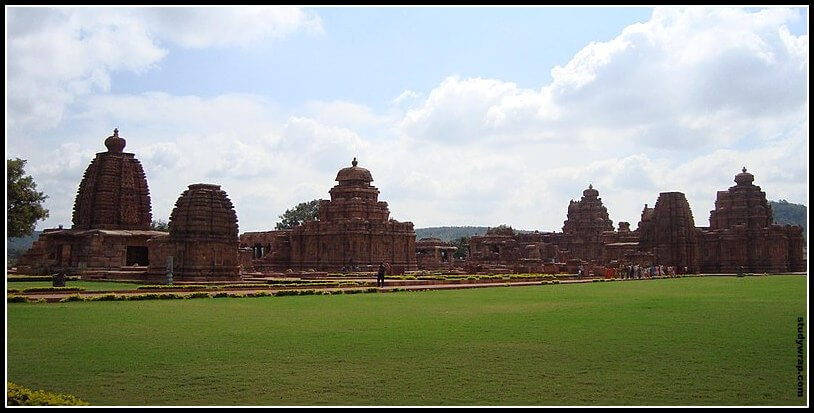
Group of Monuments at Pattadakal (1987)
· City – Pattadakal, Bagalkot District
· State – Karnataka
· Designated under UNESCO World Heritage List, in 1987, Consists of nine Hindu temples and a Jain sanctuary, Built during the reign of the Chalukya Dynasty from the 6th to the 8th centuries.
· It is famous for its Chalukya style of architecture that originated in Aihole and blended with the Nagara and Dravidian styles of architecture.
· The famous monuments are- Virupaksha Temple, Sangameshwara Temple, Chandrashekhara Temple, Mallikarju Temple, Kashi Vishwanath Temple, Jagannath Temple, Jain Temple and many more.
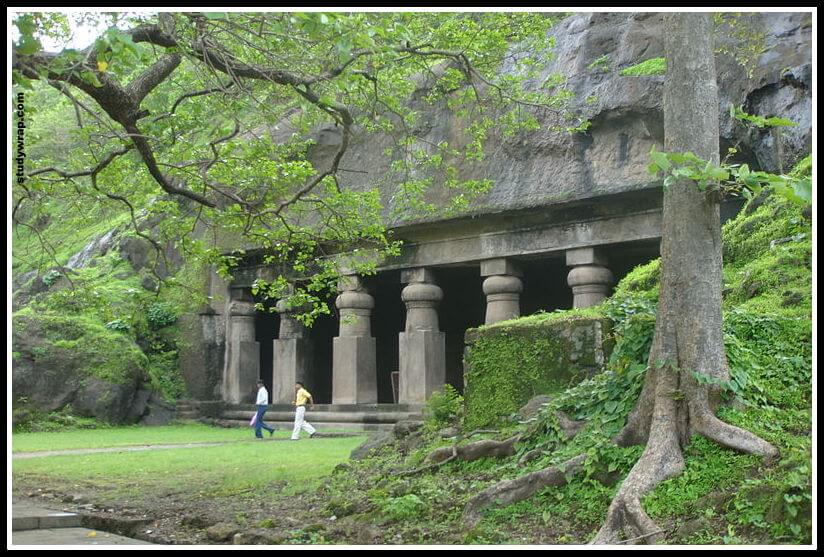
Elephanta Caves (1987)
· City – Mumbai
· State – Maharashtra
· Located at Elephanta island or Gharapuri island (literally- ‘City of Caves’) close to Mumbai.
· There are two groups of caves consisting of –
o one group consists of five Hindu caves and
o the other consists of two Buddhist caves.
· The Hindu caves Contains a collection of rock cut stone sculptures related to the Shaivite cult.
· It is a vital symbol of the greatness of Indian art, especially the huge high reliefs in the main cave.
· They were constructed around the mid-5th to 6th centuries AD. However, it remains unknown as to exactly who built them.
· The caves are carved from solid basalt rock. Renovated in the 1970s, the caves were designated a World Heritage Site in 1987 to preserve the artwork.
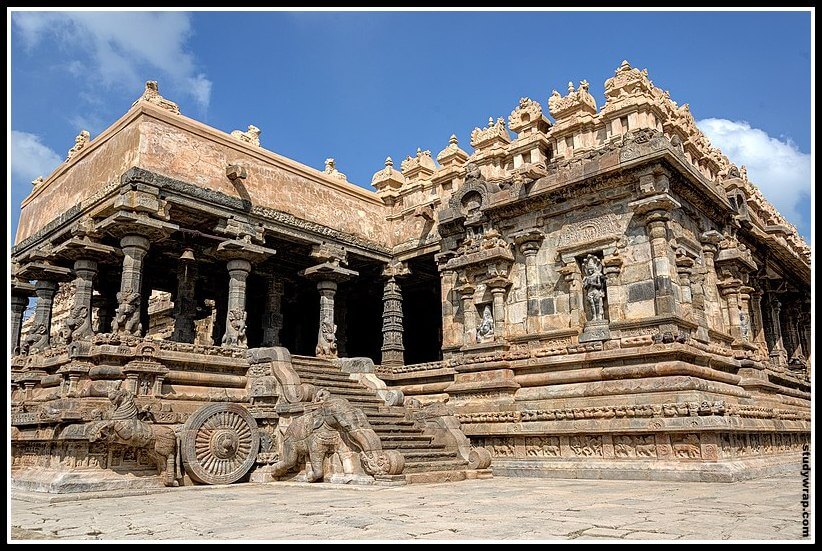
Great Living Chola Temples (1987)
· City – Thanjavur, Gangaikonda Cholapuram
· State – Tamil Nadu
· Built during the 11th and 12th centuries, it includes 3 great temples namely –
o Brihadeeswarar Temple at Thanjavur,
o Airavateshwarar Temple at Darasuram.and
o Brihadeeswarar Temple at Gangaikondacholapuram.
· All of these temples exemplify the architectural achievements of the Chola culture in India. It also showcases the other art forms such as bronze casting, painting and sculpture.
· The site was inscribed under UNESCO World Heritage Site in India in 1987 as Cultural heritage.
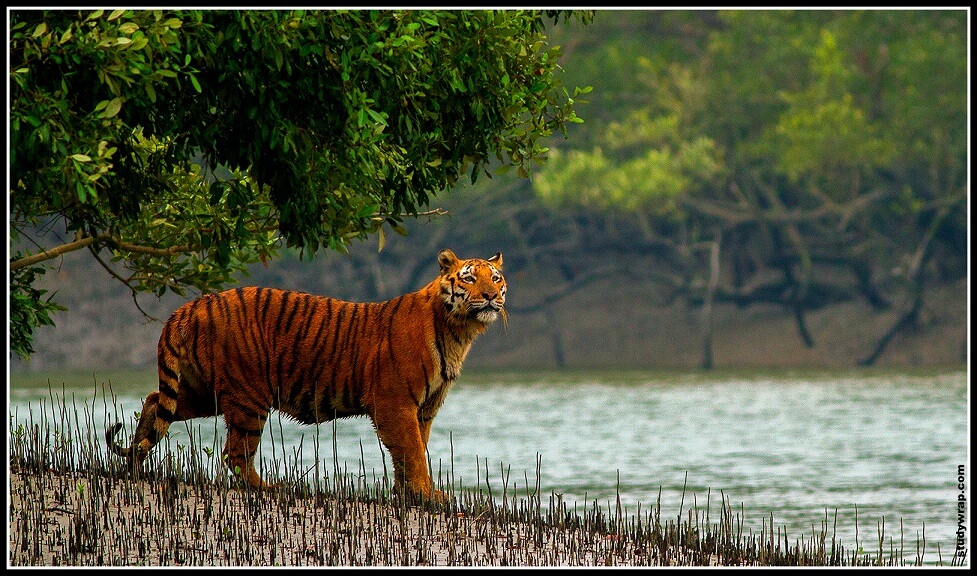
Sundarbans National Park (1987)
· City – Kolkata
· State – West Bengal
· Considered an important natural monument in India, it is a national park, tiger reserve and biosphere reserve located in Sundarban Ganga River Delta.
· Located in West Bengal, it is located adjacent to the Sundarban Reserve Forest in Bangladesh.
· Declared a national park in 1984, it was initially a tiger reserve. It’s the world’s largest mangrove forest reserve.
· Filled with mangrove forest and a giant reserve for Bengal tigers, it is close to the Ganges Delta. It is also home for Gangetic Dolphins and Saltwalter Crocodile.
· Aside from the tigers, several species of birds, reptiles, and invertebrates also inhabit the area.
· It was inscribed on the UNESCO World Heritage Site of India in 1987 as a natural property.
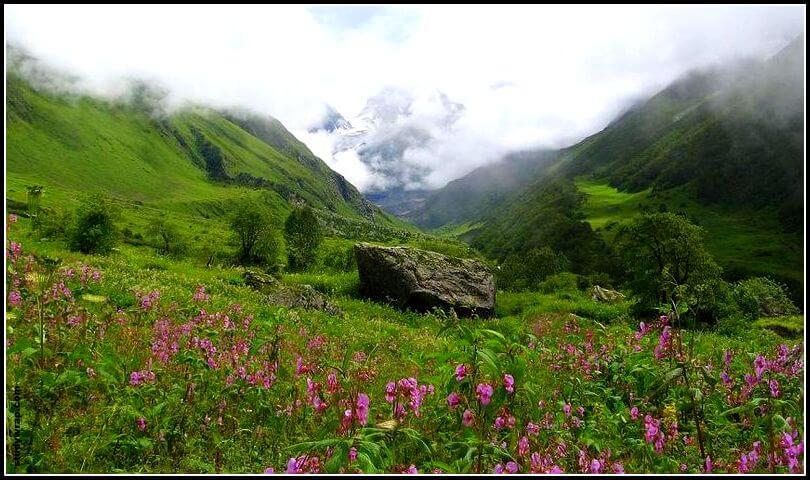
Nanda Devi and Valley of Flowers National Parks (1988)
· City – North Chamoli
· State – Uttarakhand
· Expanded in 2005, the park includes the Valley of Flowers National Park.
· It is a park consisting of two core areas: Nanda Devi National Park and Valley of Flowers National Park.
· Valley of Flowers National Park, located in Gharwal Himalaya, Chamoli, Uttarakhand, is renowned for its meadows of endemic alpine flowers and outstanding natural beauty. It is also home to rare and endangered animals, including the Asiatic black bear, snow leopard, brown bear and blue sheep.
· Nanda Devi National Park was established as a national park on November 6, 1982.
· Together, they comprise the Nanda Devi Biosphere Reserve, which is on the UNESCO World Network of Biosphere Reserves since 2004.
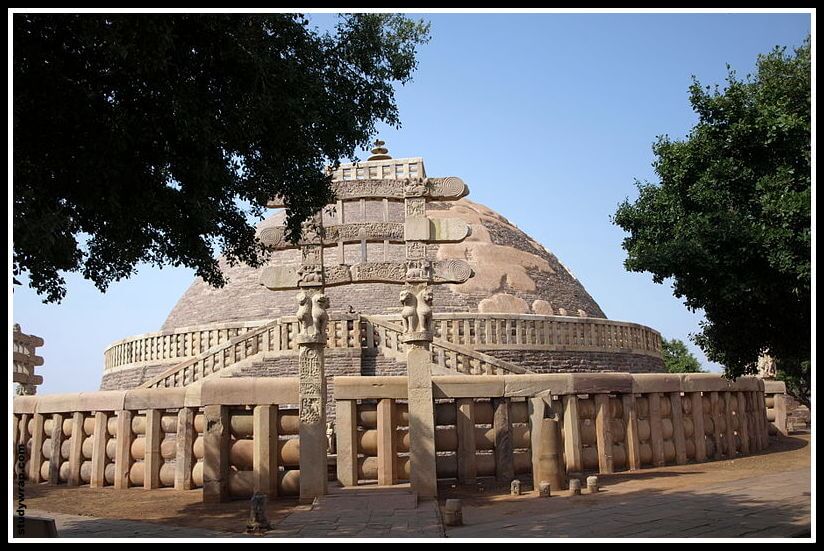
Buddhist Monuments at Sanchi (1989)
· City – Sanchi
· State – Madhya Pradesh
· The Buddhist Monuments located at Sanchi in Madhya Pradesh are a manifestation of Heritage of India, and they are the oldest stone structures in India.
· This site holds a collection of Buddhist monuments that date back from 200 to 100 BC. However, many assumed that the site was developed under the rule of Mauryan Empire in the 3rd century BC.
· Until the 12th century, these sanctuaries serve as active Buddhist religious monuments.
· The sanctuary has a plethora of monolithic pillars, palaces, temples and monasteries in different status of preservation.
· It was inscribed as a World Heritage Site in India by UNESCO on January 24, 1989, for its unique cultural importance.
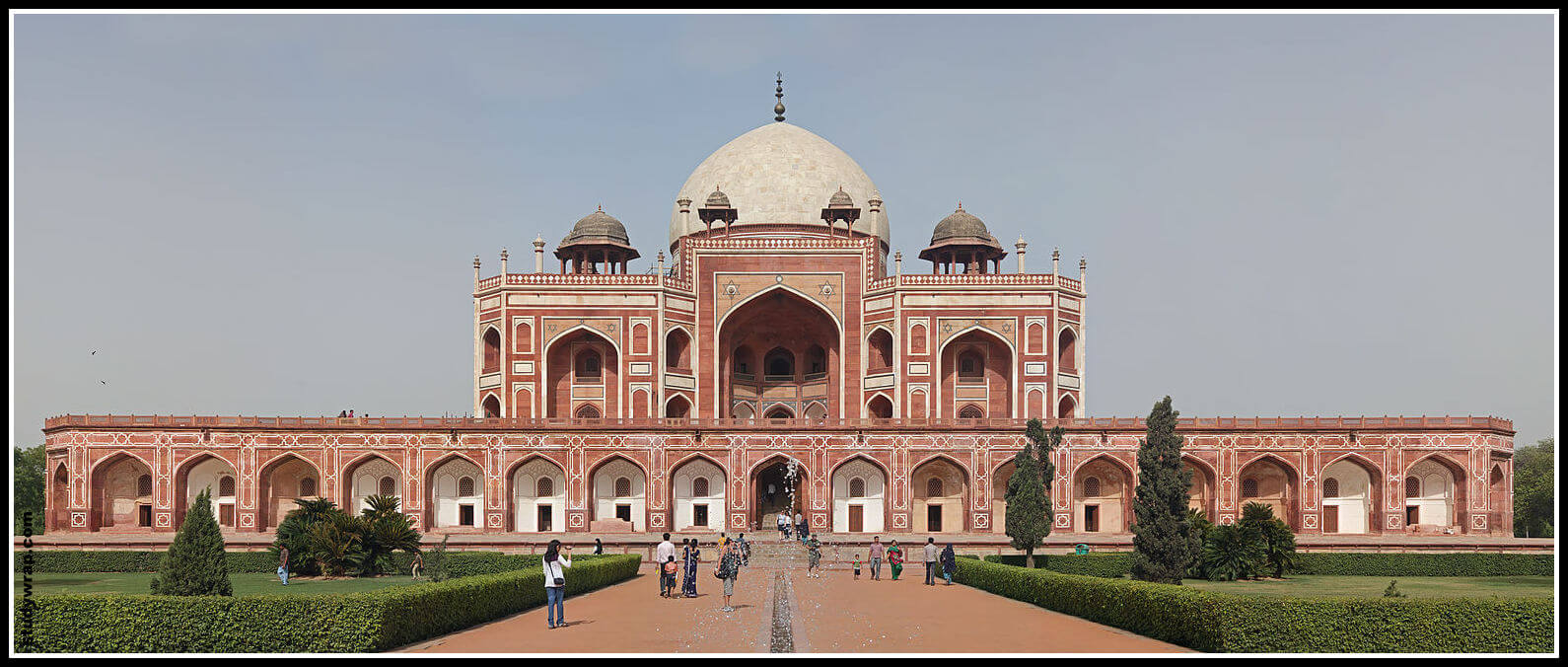
Humayun’s Tomb (1993)
· City – New Delhi
· State – Delhi
· Commonly referred to as the precursor to the Taj Mahal. It has also earned the name “Necropolis of the Mughal dynasty”.
· It was built in 1569–1570 by the second Mughal Emperor Humayun’s widow Biga Begum (Hajji Begum).
· The tomb is built with a char-bagh (fourfold) layout with two gates, one on the south and the other on the west. It has a number of water channels, a pavilion and a bath. The tomb set on an irregular octagonal platform, has a raised dome covered by marble slabs and decorated with chhatris.
· The property holds the tomb of Humayun and 150 tombs from the royal family.
· Built-in the 16th century, it was listed by UNESCO as a world heritage site in India in 1993.
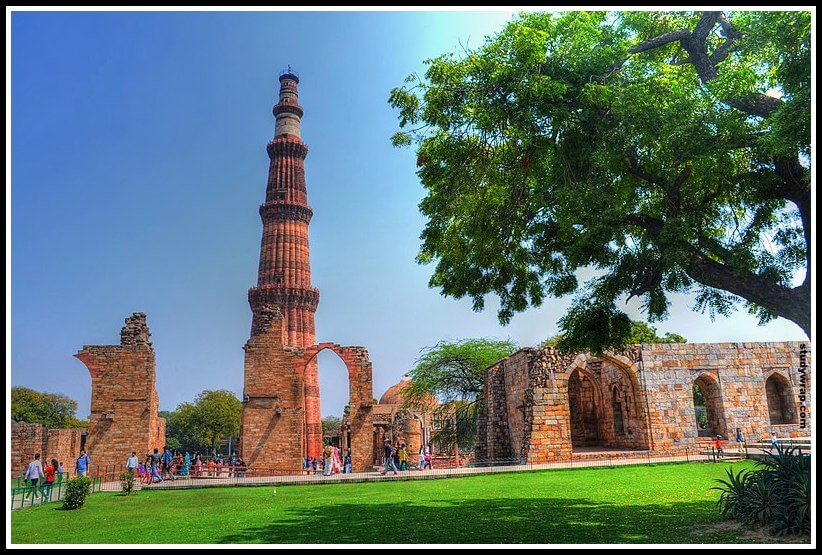
Qutb Minar and its Monuments (1993)
· City – New Delhi
· State – Delhi
· Built-in the 13th century, these complex structures testify to the Islamic destructions during that time as the materials used for constructing these structures were from the ruins of Jain and Hindu temples.
· Built in the beginning of the 13th century, the complex of structures comprises =
o the Alai Darwaza Gate (1311),
o the Alai Minar (an incomplete mound of the intended Minar or tower),
o the Qubbat-ul-Islam Mosque (the earliest existing mosque in India),
o the tomb of Iltutmish, and
o an Iron Pillar.
· The main feature of the complex is the red sandstone tower, Qutb Minar, which rises to a height of over 72 meters.
· Inscribed into the list of World Heritage Sites in India by UNESCO in 1993, these complex monuments are unique representation of the Islamic architectural and artistic excellence.
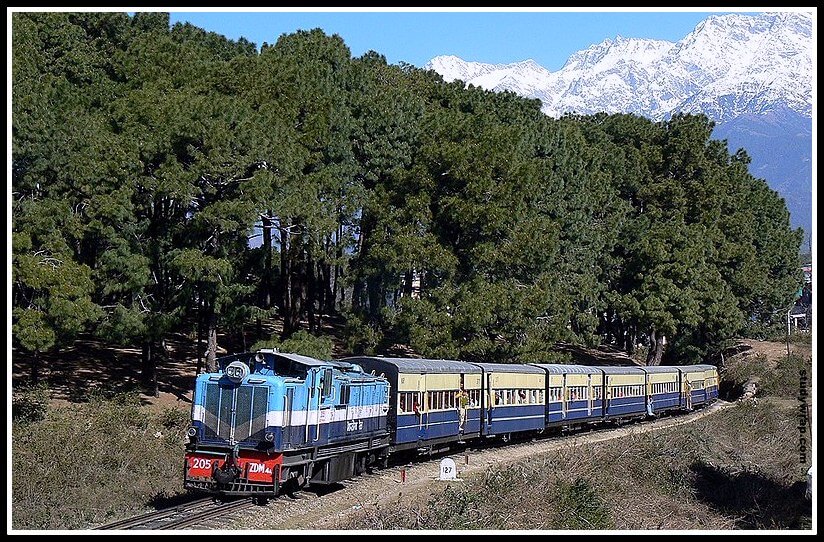
Mountain Railways of India (1999, 2005, and 2008)
· Cities – includes following cities –
o Darjeeling Himalayan Railway (1999), Darjeeling, West Bengal
o Nilgiri Mountain Railway (2005) Ooty, Tamil Nadu
o Kalka-Shimla Railway, (2008) Himachal Pradesh
· This property is a combination of three railways in India that are located in the mountains. These railways were built in the 19th and 20th centuries.
· Two railways, the Darjeeling Himalayan Railway (1881) and the Kalka-Shimla Railway (1898) are located in the hill regions of the Himalayas of Northern India.
· The other two, the Nilgiri Mountain Railway (1908) and the Matheran Hill Railway (1907) (Approval Pending for Matheran) are located in the hill regions of the Western Ghats of Southern India.
· The World Heritage UNESCO recognition of these mountain railways of India has been stated as for being “outstanding examples of bold, ingenious engineering solutions for the problem of establishing an effective rail link through a rugged, mountainous terrain”.
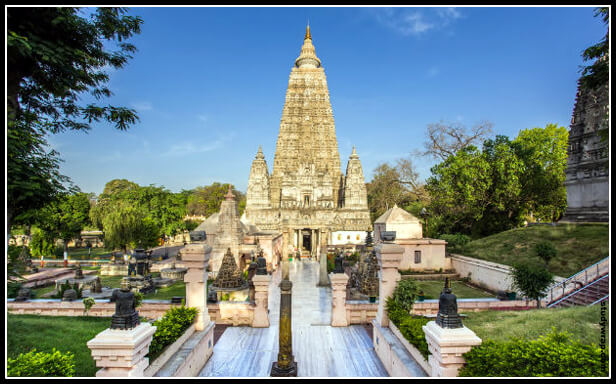
Mahabodhi Temple Complex (2002)
· City – Both Gaya
· State –Bihar
· Considered as one of the four holy sites relating to the life of Buddha, this temple complex is a World Heritage Site.
· The holy Bodhi Tree is the site where Siddhartha gained Enlightenment and became Gautam Buddha.
· The first temple was built by Emperor Asoka in the 3rd century B.C., and the present temple dates from the 5th or 6th centuries. Constructed solely out of brick, still standing in India, from the late Gupta period, is one of the first Buddhist temples in India.
· Currently, the Mahabodhi Temple Complex at Bodh Gaya comprises the 50 m tall Mahabodhi Temple, the Vajrasana, sacred Bodhi Tree and other six sacred sites of Buddha’s enlightenment, surrounded by numerous ancient Votive stupas.
· It started the development of brick architecture in the centuries to follow. UNESCO recognized both the temple area and the Lotus Pond around it in the listing.
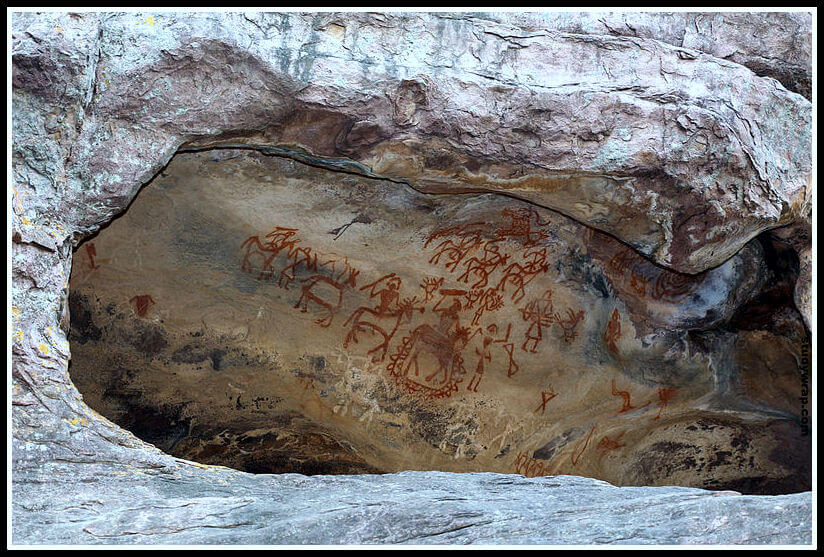
Rock Shelters of Bhimbetka (2003)
· City – Bhimbetka
· State – Madhya Pradesh
· Located at the foothills of the Vindhya Mountains in the Deccan Plateau and are an archaeological site for the Mesolithic period (more than 100,000 years ago) and thus indicates the beginning of the South Asian Stone Age.
· The rock shelters comprise a group of 5 rocks which were discovered only in 1957 and are renowned for the Mesolithic era carvings and paintings.
· Inscribed as one of the UNESCO World Heritage Sites in India in 2003, the repository of The Rock Shelters of Bhimbetka paintings within sandstone formations expands up to nearly 2000 hectares of land area.
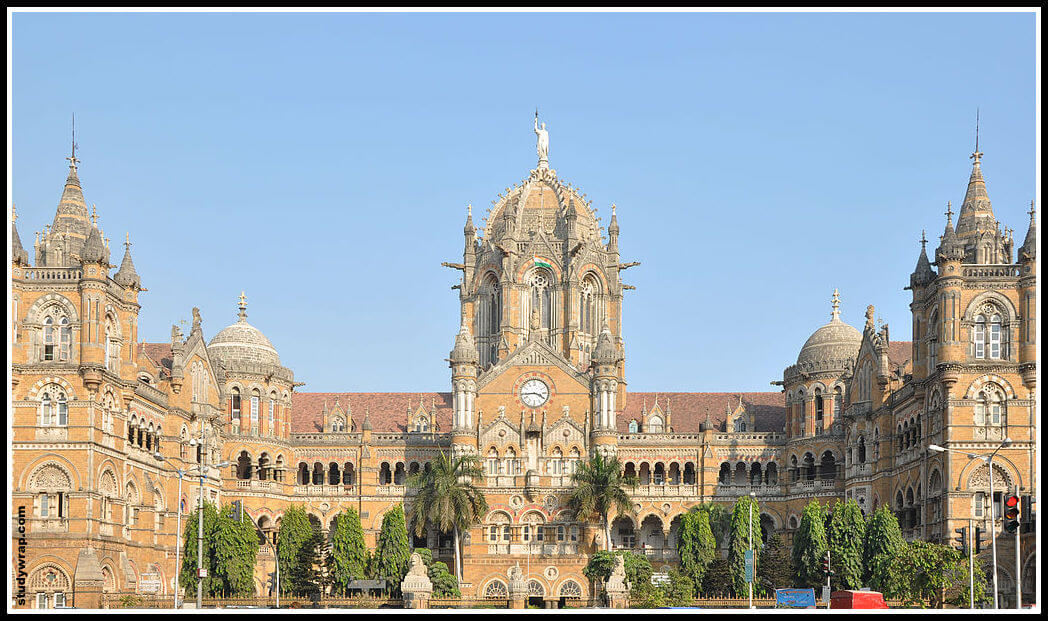
Chhatrapati Shivaji Terminus – formerly Victoria Terminus (2004)
· City – Mumbai
· State – Maharashtra
· This historic railway station is located in Mumbai, India. It is also the headquarters for the Central Railways in India. This station is one of the busiest in the country.
· Designed by architect Frederick William Stevens during the 19th century, the completion of this project took 10 years. Originally named after Queen Victoria as Victoria Terminus.
· It features a Gothic architectural style.
· In 1996, it was renamed to Chhatrapati Shivaji Terminus.
· On July 2, 2004, the station was nominated as a UNESCO World Heritage Site in India.

Champaner-Pavagadh Archaeological Park (2004)
· City – Champaner, Panchmahal District
· State – Gujarat
· Largely unexcavated archaeological, historic and living cultural heritage properties are held in an impressive landscape which includes prehistoric (chalcolithic) sites, a hill fortress of an early Hindu capital, and remains of the 16th century capital of the state of Gujarat.
· From palaces to religious buildings, to fortifications and agricultural structures, all of these combine to making this site important to the region.
· The Kalikamata Temple and Jain Temple on top of the Pavagadh Hill is considered to be an important shrine, attracting large numbers of pilgrims throughout the year.
· It was inscribed as a UNESCO World Heritage Site in India in 2004 as a cultural site.
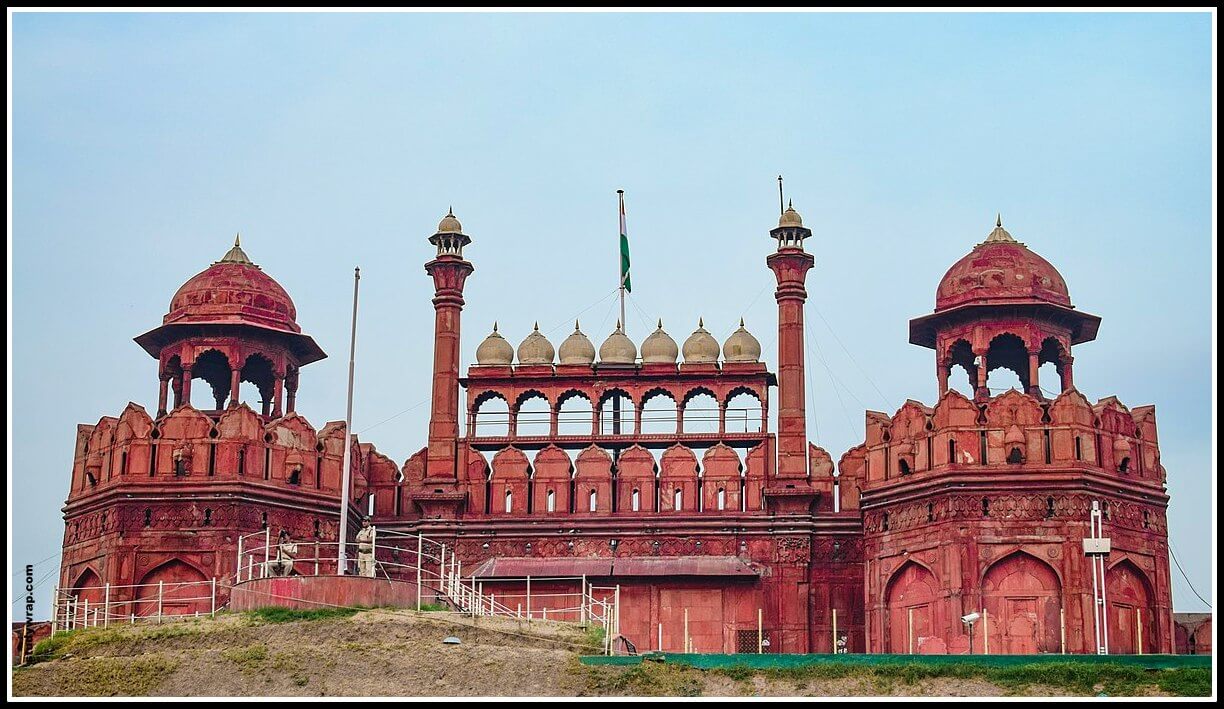
Red Fort Complex (2007)
· City – New Delhi
· State – Delhi
· Built for the 5th Mughal Emperor, Shah Jahan, this palace fort was built in the 17th century also known as Lal Qila.
· The monuments have unique architectural design that features a blend of Indian, Persian and Timuri styles.
· Served as the main residence of the emperors of the Mughal dynasty, it is located in the centre of the city.
· This impressive architecture derives its name from its invincible red sandstone walls.
· The palace within the fort complex, located behind the Diwan-i-Aam, comprises a series of richly engraved marble palace pavilions, interconnected by water channels, the Diwane-i-khas, several other essential private structures, and also the Moti Masjid.
· Today, this monument is home to a number of museums that have an assortment of precious artifacts on display.
· Every year, the Indian Prime Minister unfurls the national flag here on Independence Day.

Jantar Mantar, Jaipur (2010)
· City – Jaipur
· State – Rajasthan
· Home to a collection of architectural astronomical instruments, built by Maharaja Jai Singh II between 1727 and 1734. There are 5 facilities within in total that were built in different locations.
· The one in Jaipur is the largest and best-preserved out of the five facilities and has a set of some 20 main fixed instruments built in masonry.
· UNESCO described it as an “expression of the astronomical skills and cosmological concepts”.
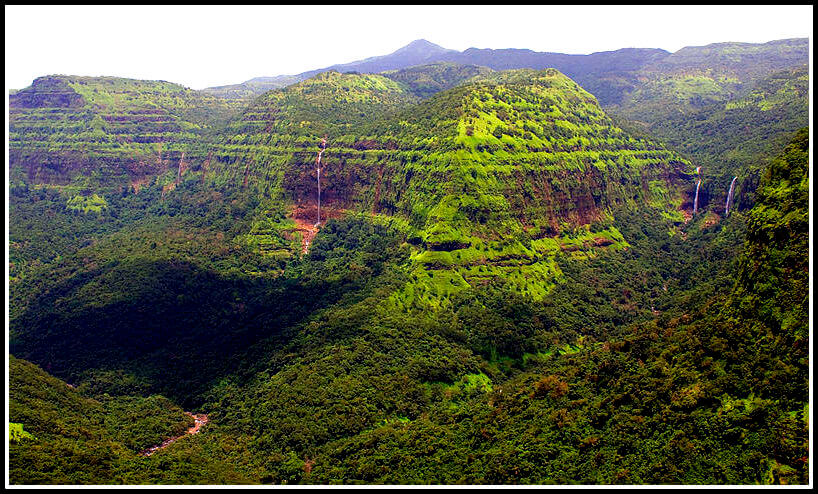
Western Ghats (2012)
· States – Kerala, Tamil Nadu, Karnataka, Goa, Maharashtra and Gujarat.
· This mountain range is located on the western part of India.
· Listed as one of the world’s “biodiversity hotspots”, it falls under the Natural category for UNESCO World Heritage Sites in India. It is further divided into clusters as –
o Agasthyamalai Sub-Cluster
o Periyar Sub-Cluster
o Anamalai Sub-Cluster
o Nilgiri Sub-Cluster
o Talakaveri Sub-Cluster
o Kudremukh Sub-Cluster
o Sahyadri Sub-Cluster
· There are 39 properties in total that are included within this property, which includes wildlife sanctuaries, forest reserves and national parks – twenty in the state of Kerala, ten in Karnataka, five in Tamil Nadu and four in Maharashtra.
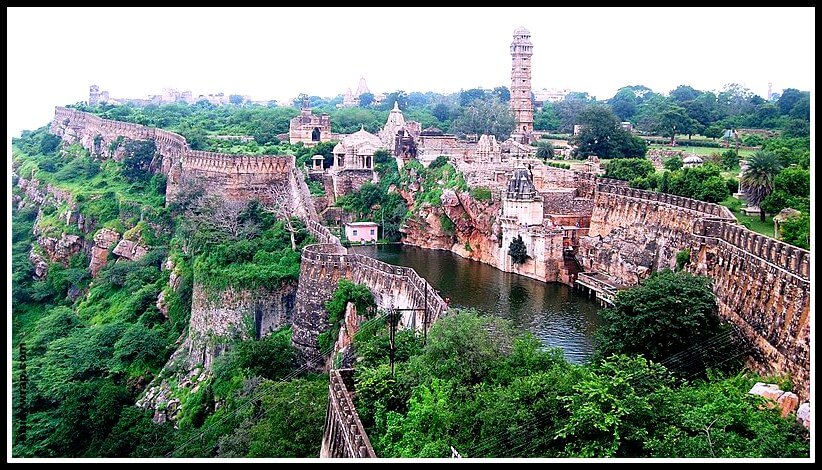
Hill Forts of Rajasthan (2013)
· State – Rajasthan
· Located in Northern India, this World Heritage Site is of great beauty and structure.
· Composed of six forts –
o Chittorgarh Fort,
o Kumbhalgarh Fort,
o Ranthambore Fort,
o Gagron Fort,
o Amber Fort, and
o Jaisalmer Fort.
· These forts are located within the Aravalli Range and date back to the 5th century AD.
· They represent a typical Rajput military hill architecture, a style characterized by its mountain peak settings, utilizing the defensive properties of the terrain.
· These fort complexes include palaces, Hindu and Jain temples, urban centers and trading centers.
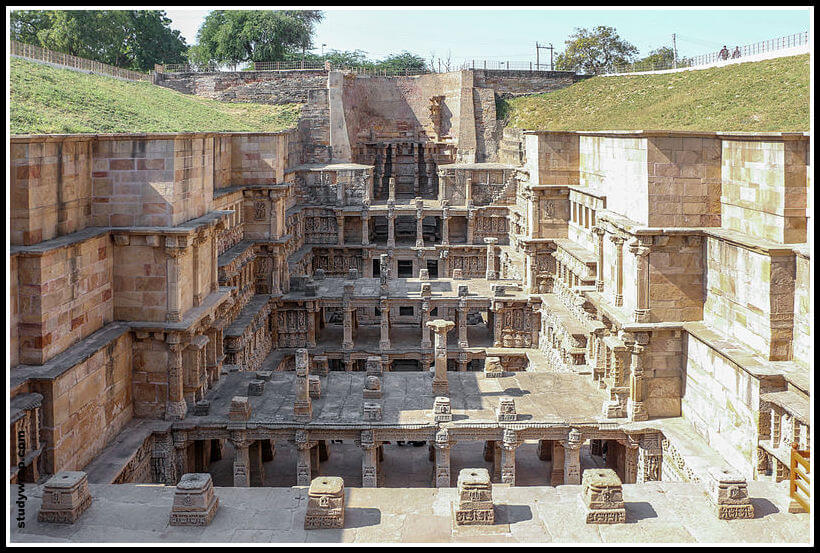
Rani ki vav – The Queen’s Stepwell (2014)
· City – Patan
· State – Gujarat
· Rani ki vav, located in the town of Patan, is a famous stepwell. It is famous for its size and sculpture.
· Intricately constructed near the banks of Saraswati River, it is a subterranean water resource and storage system that was ahead of its time upon its construction in the third millennium BC.
· This stepwell flaunts the Maru-Gurjara architectural style, designed in the form of an inverted temple to emphasize the sanctity of water and is endowed with more than thousand sculptures depicting a combination of religious, mythological and secular imagery.
· It is declared as a UNESCO World Heritage site in India in 2014, owing to its architectural marvel and splendour.

Great Himalayan National Park (2014)
· City – Kullu
· State – Himachal Pradesh
· Located in western part of Himalayan Mountains in the state of Himachal Pradesh, this Park is well known for its high alpine peaks, alpine meadows and riverine forests. It was founded in 1984.
· The glacial and snow meltwater is an important source for the water supply catchments below it.
· Additionally, it is a biodiversity hotspot with 25 types of forests inhabited by myriads of faunal species, several of which are threatened.
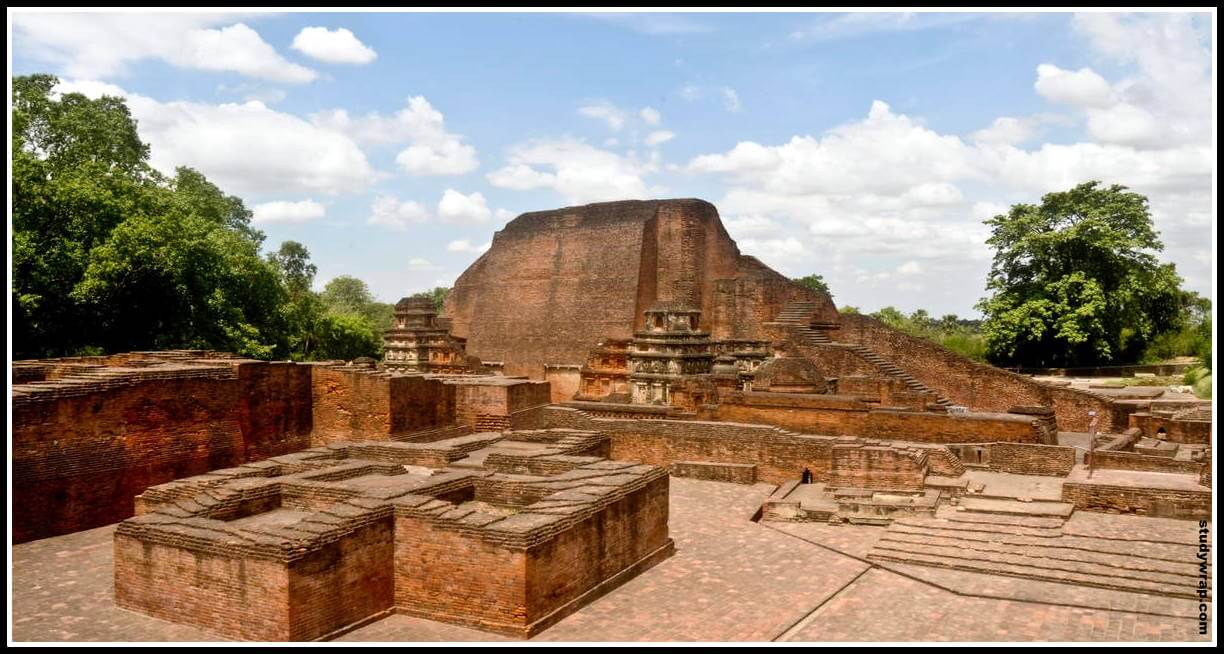
Nalanda – Buddhist Monastery (2016)
· City – Nalanda district
· State – Bihar
· It is an archaeological site consisting of scholastic and monastic institutional remains that date back to the 3rd century BCE.
· It includes stupas, shrines, viharas and important art works in stucco, stone and metal.
· Considered to be the most ancient university of the Indian Subcontinent.
· Famous for educational and monastic purposes, this site is believed to be an important example of the development of Buddhism.
· Known for its formalised Vedic learning, scholars from as far as Tibet, China, Korea, and Central Asia once attended the first residential university of the World.

Khangchendzonga National Park (2016)
· City – North Sikkim
· State – Sikkim
· Located in Sikkim, this National Park is dominated by the world’s third-highest peak, Mount Khangchendzonga.
· Composed of snow-capped mountains, this national park offers unique diversity in terms of landscape ranging from plains to valleys and glaciers.
· It covers almost 25% of the state of Sikkim and ensures a habitable environment to various endemic as well as threatened, plant and animal species.
The Architectural Works of Le Corbusier (2016)
· City – Chandigarh
· State – Chandigarh (The Complexe du Capitole in Chandigarh)
· Spread out to over 17 sites in 7 different countries, the architectural works of Le Corbusier is one of those transnational properties.
· The other countries where these sites are located are Japan, France, Argentina, Belgium, Germany, and Switzerland.

Historic City of Ahmedabad (2017)
· City – Ahmadabad
· State – Gujarat
· Founded in the early 15th century by Ahmad Shah I of Gujarat Sultanate, the historic city of Ahmedabad is a walled city in India.
· Ahmedabad is a walled city on the banks of Sabarmati where communities following Hinduism, Islam and Jainism have co-existed for centuries.
· It’s the capital and an important political and commercial centre of Gujarat.
· Recognized by UNESCO for its cultural value, this urban settlement continues to symbolize the heart of metropolitan Ahmedabad.
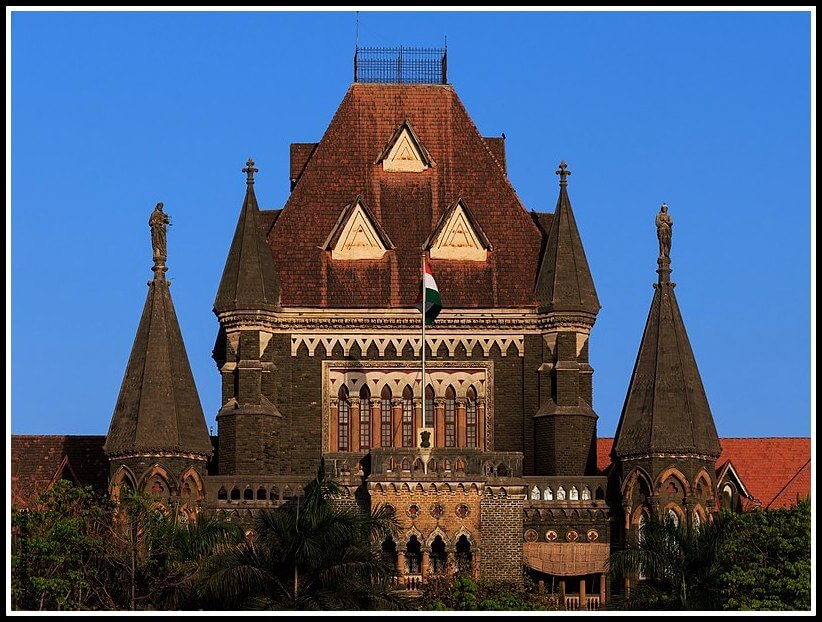
The Victorian and Art Deco Ensemble of Mumbai (2018)
· City – Mumbai
· State – Maharashtra
· This site includes a collection of public buildings designed in Victorian Neo-Gothic style in the 19th century and Art Deco style in the 20th century.
· They are the Bombay High Court, Rajabai Clock Tower, Eros Cinema and the University of Mumbai.
· Known as Indo-Deco over time you can find this fascinating ensemble of buildings around the Oval Maidan, and the blended architectural styles show Mumbai’s growth as a fortified trading outpost to the first city of India.
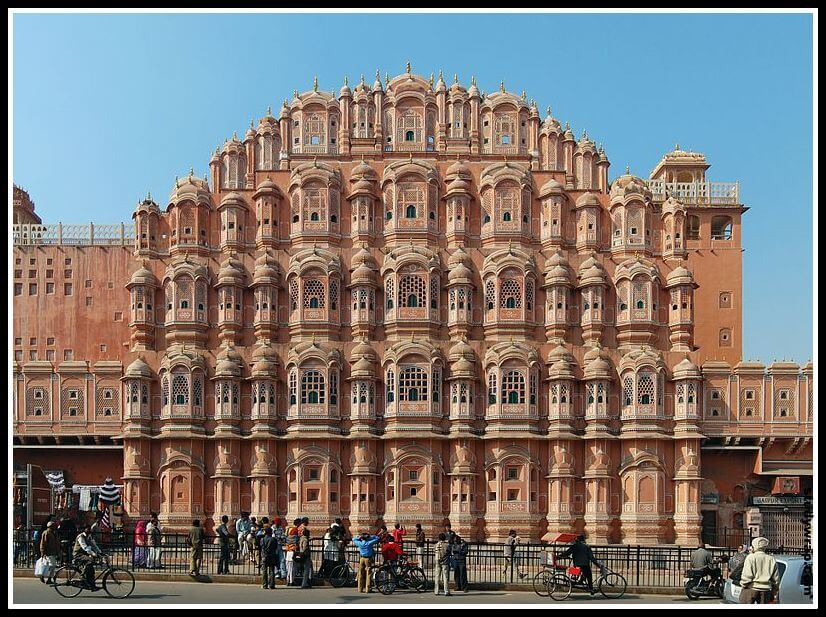
Jaipur – the Pink City (2019)
· City – Jaipur
· State – Rajasthan
· The fortified city of Jaipur, in India’s north-western state of Rajasthan was founded in 1727 by Sawai Jai Singh II.
· Jaipur was established on the plain and built according to a grid plan interpreted in the light of Vedic architecture.
· Markets, stalls, residences and temples built along the main streets have uniform facades.
· The city’s urban planning shows an exchange of ideas from ancient Hindu and modern Mughal as well as Western cultures.
· The grid plan is a model that prevails in the West, while the organization of the different districts refers to traditional Hindu concepts.
· It was recently included in the UNESCO World Heritage in India List in 2019.
So this was all about the UNESCO World Heritage Sites in India. If you want to read a List of UNESCO World Heritage Sites in India, than – Click Here. To read more such notes on General Knowledge – Click Here.
If you find this article useful, than do share it with your friends and family and do like our Facebook Page to get regular updates.

